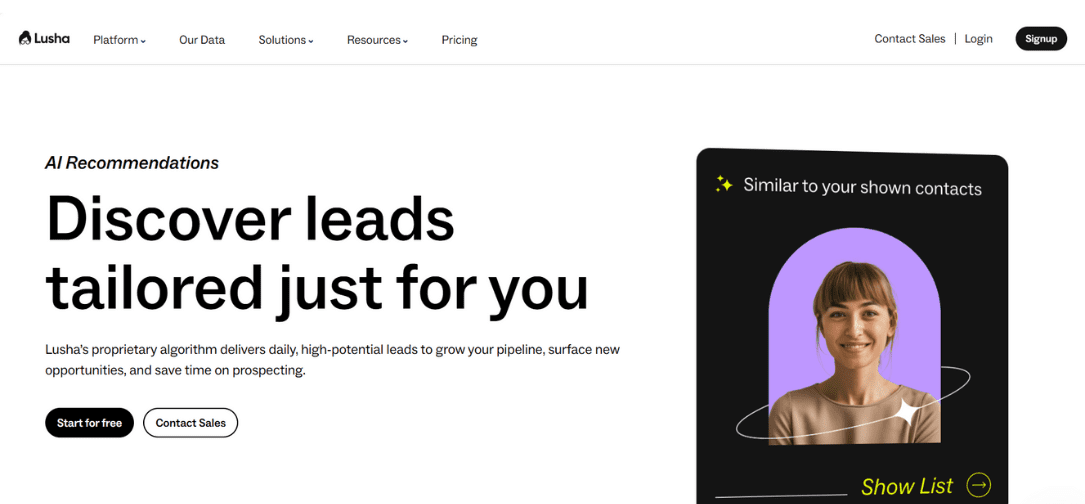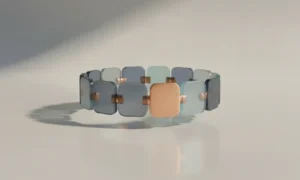How one person, and a stack of AI tools, built a full-scale musical brand ad for $500, redefining what creative production means in the age of automation.
Lusha’s new CTV campaign, a full-scale musical brand ad built by one creative using AI tools and a $500 budget, captures more than marketing ingenuity. It reflects the same foundation that drives Lusha’s sales intelligence platform: trust, accuracy, and speed. In both storytelling and sales, when people and verified data align, teams can “Just Sell” — or, in this case, just create.
The $500 Ad That Sparked an Industry Conversation
When Lusha’s co-founder and CEO Yoni Tserruya posted on LinkedIn that his “creative team is one person” and that this one person had just delivered a full-blown musical brand ad for $500, the reaction across the marketing world was immediate.
“An original theme song. Band. Singers. Actors. Theatre. Lights. Cameras. Fireworks. The works,” Tserruya wrote. “Five years ago, a traditional agency would’ve charged $120K to $500K for this.”
The campaign was not a gimmick. It was a statement, and a real-world proof of how generative AI is changing what creative production can look like.
AI as the Great Creative Equalizer
Across industries, generative AI has lowered the cost of creation from six figures to three digits. Tools like Runway, Suno, Midjourney, Veo 3, and Adobe Creative Cloud now allow individuals to execute what once required entire studios.
“We didn’t see it as a risk, we saw it as a proof point,” Tserruya said. “At Lusha, we are all techno-optimists and believe AI can help us become superhumans. When Asaf said he could build a full-scale musical brand CTV ad alone with AI tools, it captured exactly what we stand for: fewer layers, faster cycles, and complete trust in talent.”
That same belief in speed through trust defines how Lusha approaches its own business. The company’s RevOps platform is built on verified data that gives sales teams confidence to move faster. Whether creating an ad or a sales pipeline, accuracy and trust create freedom to act.
The New Creative Stack
The ad’s production credits read like a who’s who of generative tools:
Runway 4, Suno, Midjourney, Veo 3, Nano Banana, Seedance Pro via Krea.ai, ChatGPT, and Adobe Premiere + Photoshop.
“The fact it cost $500 just made the metaphor stronger,” Tserruya said. “It was watching someone with real creative vision suddenly have access to tools that used to require an entire production studio.”
In a sense, that mirrors what Lusha enables for sales and RevOps teams. Just as one creative can now produce Hollywood-level output with AI, one sales professional can act like an entire operations department when powered by verified, compliant, and automated data.
The Trust Principle
Trust has always been Lusha’s north star.
“Trust is the foundation of our company’s culture: in data, people, and process,” Tserruya said. “We built our entire business on verified data because salespeople need to trust what they’re working with. That same principle applies to how we work internally. When you combine trust in people with powerful tools, things move faster. Better.”
This connection between data accuracy and creative autonomy highlights an emerging truth in business: AI works best when it is guided by verified inputs and trusted experts. The same culture that fuels Lusha’s RevOps products also powers its creative process.
The Human Factor: Experience Meets AI
While the ad’s cost and speed drew attention, the real story lies in who created it: Asaf Feider, a 20-year advertising veteran with what Tserruya calls “the curiosity of a student.”
“We’re living through this incredible moment where the barrier between imagination and execution is collapsing,” Tserruya said. “Five years ago, if you had a vision for a cinematic musical ad, you needed a production house, a crew of 20–30 people, months of time, and six figures. And now, just one person with creative vision and the right AI tools, Runway for video, Suno for music, Midjourney for visuals, can create something that looks like it came out of a Hollywood studio.”
At Lusha, that same combination of human experience and AI enablement defines how the company builds products for sales professionals. People with deep sales instincts can now move with the precision and speed of entire RevOps teams.
Leadership in the Age of Autonomy
“I get the nervousness. Letting go of control feels risky. But here’s what I’ve learned: control creates safety, but it kills speed. And in 2025, speed matters more than perfect. So, set the direction, provide the tools, then step back. That’s not absence of leadership, it’s confidence in the people you chose.”
Tserruya’s leadership philosophy reflects a broader shift that extends beyond creative teams. In sales and operations, as in marketing, speed and clarity come from leaders who trust their teams and data systems. This is the essence of Lusha’s “Just Sell” message: when the data is verified and the tools are powerful, leaders can get out of the way and let teams perform.
Why It Matters
The implications reach far beyond Lusha. The $500 ad is not just a marketing experiment; it is a signal of what happens when verified data, AI automation, and human trust converge.
In the same way that AI has democratized creative production, it is democratizing revenue operations. Lusha’s approach shows that when accuracy and compliance are baked into the system, every team can move with confidence, creativity, and speed.
“The gap is trust,” Tserruya wrote in his post. “Do you believe your creative team + AI can beat an entire agency? If yes, prove it. Give them all the tools they need and full creative freedom. If no, keep watching your competitors ship musicals.”
For modern RevOps leaders, the same challenge applies. The future belongs to teams that trust their tools.

































